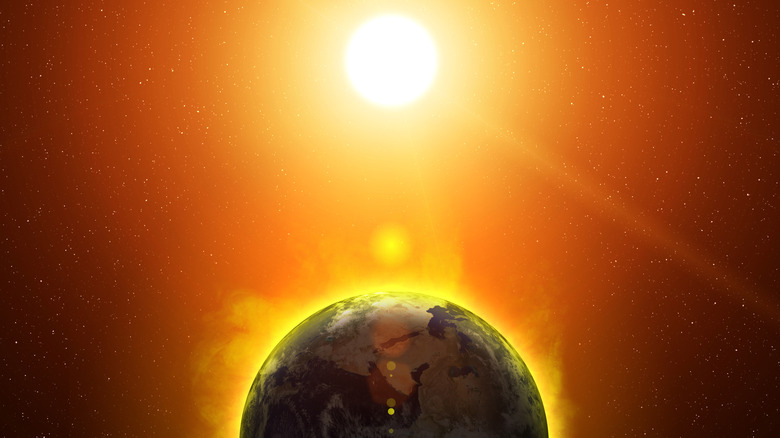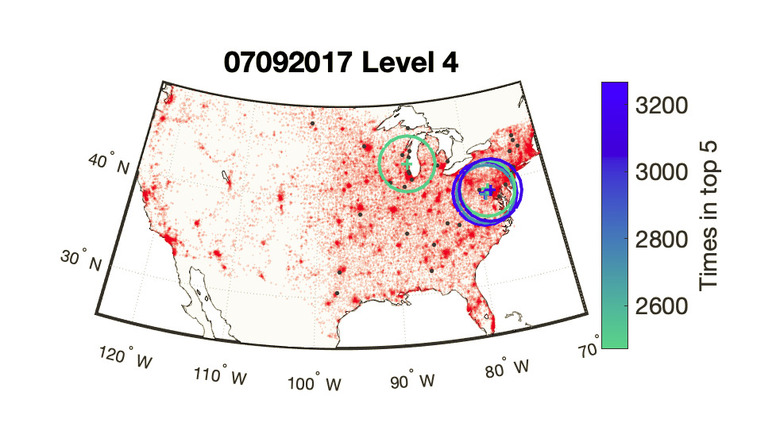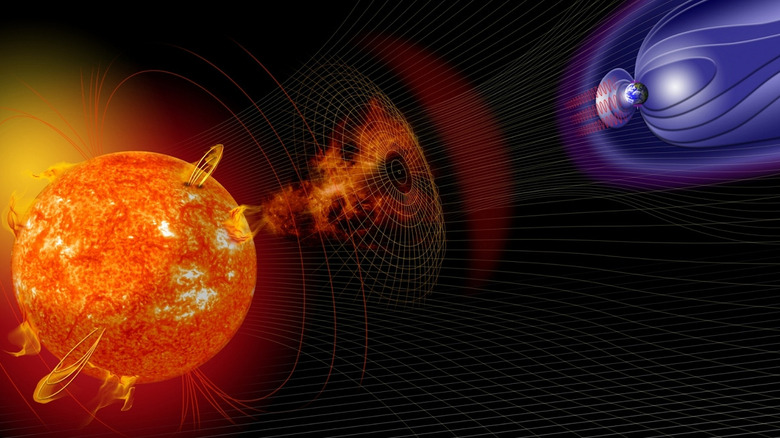This US City Is The Most Vulnerable To Space Radiation, According To Scientists
Space radiation might sound like a fanciful problem that would only affect astronauts, but it can affect the Earth, too. When the sun is particularly active and gives off solar flares or other big outpourings of energy called coronal mass ejections (CMEs), these travel through the solar system and arrive at Earth.
These effects are referred to as space weather. In 2024, extremely high activity from the sun caused auroras to be visible across much of the globe in mostly nonhazardous geomagnetic storms. Auroras like the northern lights happen when charged particles from the sun interact with Earth's atmosphere, so them being visible is a highly recognizable demonstration of space weather in action.
Now, there's no need to panic. Solar storms aren't going to directly hurt you when you live on Earth's surface, as the planet has both an atmosphere and a magnetic field called a magnetosphere which act as protective barriers against radiation. You aren't going to have health problems caused by the sun as long as you stay on the planet's surface. (Though astronauts are not fully protected from space radiation and have to take shelter on the International Space Station when the sun is extremely active.) Nevertheless, space weather can have effects on Earth, and scientists are studying which places are most vulnerable to them.
Washington DC and Milwaukee are most vulnerable to space weather
The biggest problems caused by space weather are endured by satellites, which orbit high above the Earth and are more exposed. Radiation can damage electronics, so if a satellite is hit by extreme space weather, its programming or route can be disrupted. As so much of our infrastructure like GPS and communications depends on satellites, this is an increasing concern.
Space weather can also damage infrastructure on the Earth's surface, like underground pipelines and electricity grids. The impact to electricity infrastructure is a particular concern for large cities. A study presented at the National Astronomy Meeting in Britain in 2024 looked at which regions of the U.S. are most vulnerable to geomagnetic storms. The study found that two cities in particular were vulnerable due to their power grids: Washington D.C. and Milwaukee, Wisconsin.
As study author Dr. Lauren Orr, of the British Geological Survey explained to the Royal Astronomical Society, the reasons that these particular cities were most at risk was due to a combination of factors, including the "electrical conductivity of the ground, the physical construction of the power grid in those areas, or the location of the auroral currents in the sky."
[Featured image by British Geological Survey via Royal Astronomical Society | Cropped and scaled | CC BY-SA 4.0]
Scientists are trying to find out ways to protect cities against space radiation
There's no way to stop space radiation or to turn down the activity of the sun, so now researchers working on space weather are primarily concerned about how to predict it. If we could know when higher levels of space radiation were expected, we could potentially protect key systems against it — or at least be prepared for the possibility of disruptions. But predicting weather on Earth is complex and difficult, and doing it in space is even harder.
Organizations like the National Oceanic and Atmospheric Administration (NOAA) have groups like the Space Weather Prediction Center, which give out information on the sun's activity and warn about upcoming geomagnetic storms, but these warnings typically only occur when the sun has already had a peak of activity. Trying to predict in the longer term, like over periods of weeks or months, is extremely difficult. For now, NOAA uses a scale of risk that collects data from three sources: geomagnetic storms, solar radiation storms, and radio blackouts.
Scientists like Orr are also using new techniques to identify infrastructure on Earth which is at high risk of damage during a solar storm. They use a technique called network science to spot potential hazards like geomagnetically induced currents (GICs), which can be created by solar storms and damage power grids. The idea is that identifying these weak spots can reduce any potential damage to the power grid.


